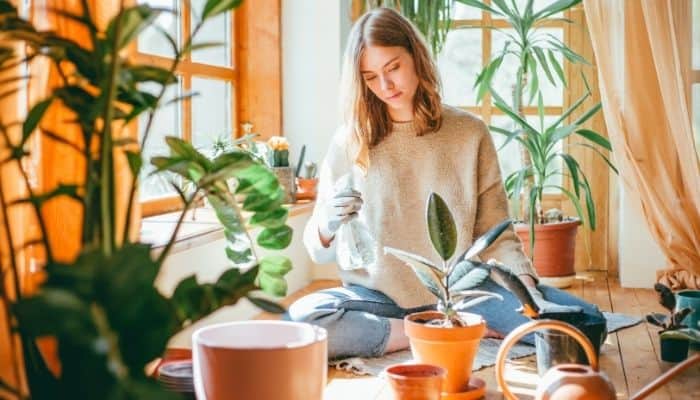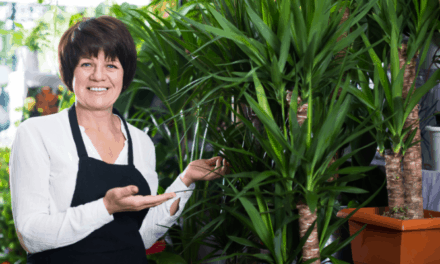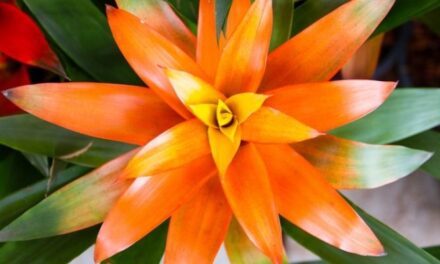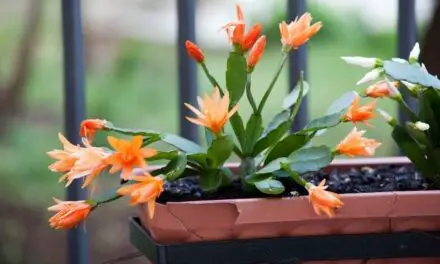The rubber plant is a common sight in offices around the country and is best known for its height and large dark-green waxy leaves.
It’s a classic house and office plant that can tolerate low-light conditions and is hardy enough to be considered beginner-friendly.
It’s an easy plant to care for and as long as you pay special attention to its needs for light and moisture, your rubber plant can grow up to be a gorgeous indoor tree and a real attention grabber.
So let’s dive in and learn all about this plant and how exactly it likes to be looked after.
Table of Contents
Rubber Plant Information

Native to the tropical rainforests of South Asia and Southeast Asia, the rubber plant tree can grow to be more than 100 feet tall.
But as a houseplant, it usually doesn’t grow to more than six to ten feet in height.
If planted outside, it can grow to be well over ten feet tall, depending on its environmental conditions.
Its leaves have quite a rubbery yet glossy appearance that comes in a variety of dark green or maroon shades with hints of cream, white, yellow, or pink.
Due to the rubber plant’s array of rich colors and reddish-black hue, it is sometimes referred to as “The black prince” or “The burgundy”.
It really is a stunning houseplant and one that’s well worth investing your time and effort into.
How To Care For Your Rubber Plant?
When learning how to look after a rubber plant, there are a couple of things you’ll need to watch for, but in general, these plants are very forgiving.
They also make the ideal house and office plants as they like bright indirect sunlight and can also do fine for extended periods in low-light conditions.
Mature rubber plants don’t react well to sudden changes in their environment.
Getting yourself a young rubber plant and allowing it to adapt to the specific conditions in your home is advisable.
If you buy an older plant that may be used to conditions different to what you will provide it, it may struggle to adapt to the environment in your home.
Sunlight
Rubber plants like lots of bright, indirect sunlight.
These plants have adapted to grow under the canopy of tropical rainforests where lots of bright, indirect sunlight gets bounced around.
It’s best to keep them out of direct sunlight or their leaves can scorch.
A sunny window shaded by a net curtain is often a perfect spot for your rubber plant.
If you can stand in the room and see your shadow being cast against the wall, you know there’s lots of bright, indirect light around.
If your rubber plant becomes leggy, its leaves begin to look dull and droopy, or its lower leaves start falling off, it’s telling you that it needs more sunlight.
The right amount of sunlight will help this beautiful plant to show its richest shades of green.
Soil
Rubber plants are hardy and can do well in most soil types.
However, you need to ensure that the soil you use has good drainage and can also hold onto some moisture.
These plants like to live in soil that’s consistently moist so soil types that dry out too quickly are not ideal.
You can combine succulent or cactus soil with a part compost and a part peat moss.
If you don’t fancy mixing your own, Miracle-Gro® Indoor Potting Mix comes highly recommended for rubber plants.
Watering And Drainage
Aim to keep your rubber plant’s soil consistently moist, but never soggy.
Use your finger to test the top couple of inches of soil and if it feels dry to the touch, you can give it some water.
Time of year and environmental conditions will determine how quickly the soil goes dry, but you’re probably safe enough to check it for dryness weekly in summer and fortnightly in winter.
Give the soil a good drenching and allow excess water to run out of the drainage holes.
Rubber plants are native to rainforests so they are used to lots of humidity and getting soaked during downpours.
Just be sure to use well-drained soil that can retain some moisture and a pot with good drainage.
And never let your plant sit in soggy soil or it can lead to root rot.
You may want to use a layer of pebbles in a saucer underneath the pot.
This will keep the plant’s roots lifted up and out of danger of becoming waterlogged.
If using tap water, allow it to sit for a few hours in an open container before watering.
By bringing the water to room temperature, it gives chlorine time to evaporate and reduces the chance of shocking your plant with cold water.
During the dormant winter season, your rubber plant may only need water once every 2 to 4 weeks.
Humidity
Since rubber trees are from the tropics, they thrive in a warm, humid climate and don’t like to be too cold or dry.
In its growing season (summer), you should pay extra attention to the plant not drying out.
You can wipe the leaves with a damp cloth to help your plant breathe in more sunlight.
You could also use misting if you don’t want to wipe down every leaf.
Fill up a spray bottle with water that’s been brought to room temperature and mist the leaves a few times each week.
If your rubber plant’s leaves start to droop, this means it needs some moisture.
Temperature
Rubber plants like a temperature of between 60 and 75 degrees F.
However, they are quite hardy and can survive in temperatures as low as 50 degrees F.
Try to avoid cold draughts, sudden temperature drops, and temperatures that dip lower than 50 F.
Fertilizer Requirements
Only fertilize your rubber plant during its growing season (summer).
For a young plant, use a fertilizer high in phosphorus to promote the development of the roots.
As your rubber plant matures and begins to produce lots of leaves, switch to a fertilizer high in nitrogen to help your plant’s leaves grow to their fullest potential.
Fertilize about once a month during the summer.
Pruning
Rubber plants emit a white, sticky sap when cut into, so stick on a pair of gardening gloves before you begin pruning.
Apart from removing dead leaves to provide space for new ones to grow, rubber plants don’t need a lot of pruning.
You can prune the plant if you want it shaped a certain way or for it to fit neatly into a corner.
People usually allow their rubber plants to grow in one of two ways; tall and thin or wide and bushy.
If you cut the top off your rubber plant it will begin to spread out and grow more wide and bushy.
But if you have the height for it to grow tall and you don’t cut its top off, your plant will grow taller and thinner.
It’s best to prune in spring or summer if you want to do a lot of it.
A little pruning in winter is okay but should be kept to a minimum.
Re-Potting
Rubber plants grow a lot of roots, and if you want them to grow big, they’ll need to be re-potted every now and then.
If the soil can’t be kept moist by you’re usual watering routine, then re-potting may be required.
If you don’t re-pot your rubber plant, it will stop growing.
If you decide to repot it, be sure it doesn’t go into a pot that’s too big.
Transplant it to a pot that is about one inch bigger in diameter than the old one.
Try to repot your rubber plant when it’s still semi-dormant at the end of winter or in early spring.
This will reduce the risk of transplant shock.
Toxicity
While you are caring for your rubber plant, make sure that you wear gloves.
It can be irritating to the touch and dangerous to both humans and pets if consumed.
For some people, rubber plant sap can often cause skin irritation and mild to moderate stomach problems.
But don’t worry too much, rubber trees are not toxic enough to kill, and compared to other poisonous houseplants they are actually one of the safest to keep.
Pests
Pests are always a risk when caring for plants.
Rubber plants are no exception and often attract mealy bugs, mites, scales, and aphids.
If you keep a keen eye on your rubber plant, you’ll be able to catch these bugs early and remove them with tweezers or by wiping the plant with a solution of warm water and insecticidal soap.
Final Thoughts
Rubber plants are easy to care for and as long as you pay a little extra attention to their light and water needs, they will grow to be beautiful indoor trees sure to impress all who see them.




